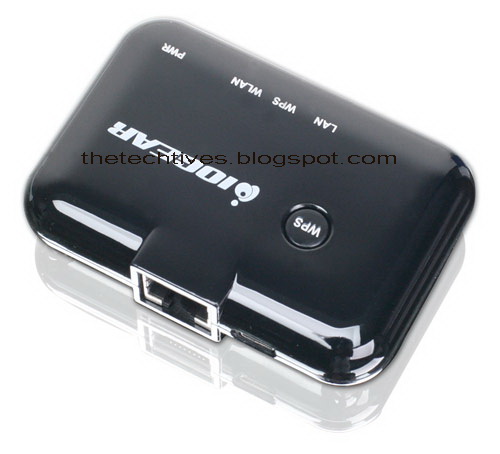Most of the concerns about fracking have focused on the fluids involved in the process, which tend to exit the wells heavily contaminated with dissolved metals and radioactive material. But those may not be the only worries. A study, released yesterday by PNAS, now shows that fracking may be contaminating local groundwater with methane to pose a risk of explosion.
As most forms of energy in the US have been going up in cost, natural gas has gone in the opposite direction. This is largely the result of a used extraction process called "fracking," in which fluids under high pressure are used to fracture rock formations deep underground, releasing large volumes of gas that would otherwise be trapped in tiny pockets. Because of relaxed regulations in some states, the process of fracking boomed before someone had a clear point of view on its environmental consequences.
The issue is not with municipal water systems, which are carefully monitored for signs of contamination. In lieu, plenty of fracking takes place in rural areas, where isolated houses may depend on shallow private wells for their water. Pennsylvania alone is estimated to have over a million private wells and, in some ares of the state, fracking activity has risen 27-fold in the last years alone. To check whether the drilling activity was having an impact on local well water, a team from Duke University sampled water from 68 private wells, looking for signs of contamination.
The wells included the Catskill, Genesee, and Lockhaven formations in New York and Pennsylvania; some were in close nearness to drilling and others over 5km away. The trends were immediately clear: those within 1km of an active drilling site were much more likely to have high levels of methane, on average 17 times higher than those sites more distant from active drilling. That average covers a broad range, . Some sites were indistinguishable from the typical inactive well, while others had concentrations of methane between 19.2 and 64 mg/l, to pose an explosive hazard, and high to qualify for hazard mitigation under the Department of the Interior's rules.
Some wells in areas more distant from active drilling did have appreciable levels of methane, so the authors looked in to whether the contamination was likely to be from local biological activity or the release of deeper deposits of the gas. Based on isotope ratios and the presence of ethane and propane, they conclude that the methane from areas of active drilling is definitely from the drilling itself.
On the and side, methane appeared to be the only contaminant from the drilling process that made it in to these wells. There were no signs that brine from deep sources or radioactive material had made it in to the local water supplies.
How did the methane get there? The simplest answer would be that the casings of the new wells are basically not sealed properly, allowing gas to leak out. Alternately, there's plenty of elderly and abandoned drill sites in the area, and fracking may have opened a pathway for gas to escape in to these wells. Finally, the authors recommend that the fracking process may open up natural fractures in the overlying rock formations. At this point, it is impossible to distinguish between these possibilities.
This is not the first recent study to recommend that fracking enabled the escape of methane in to the environment. A Cornell professor set of a fair tiny bit of controversy by publishing a study that indicated that fracking released a lot methane that its impact on greenhouse gas levels was worse than that of burning coal. Although a number of the assumptions in that paper have come under sharp criticism, the papers recommend that inadvertent methane release is an issue worth giving cautious attention.
The authors of the new paper provide a second reason: lawsuits. "Based on our groundwater results and the litigious nature of shale-gas extraction," they conclude, "we think that long-term, coordinated sampling and monitoring of industry and private homeowners is necessary."
As most forms of energy in the US have been going up in cost, natural gas has gone in the opposite direction. This is largely the result of a used extraction process called "fracking," in which fluids under high pressure are used to fracture rock formations deep underground, releasing large volumes of gas that would otherwise be trapped in tiny pockets. Because of relaxed regulations in some states, the process of fracking boomed before someone had a clear point of view on its environmental consequences.
The issue is not with municipal water systems, which are carefully monitored for signs of contamination. In lieu, plenty of fracking takes place in rural areas, where isolated houses may depend on shallow private wells for their water. Pennsylvania alone is estimated to have over a million private wells and, in some ares of the state, fracking activity has risen 27-fold in the last years alone. To check whether the drilling activity was having an impact on local well water, a team from Duke University sampled water from 68 private wells, looking for signs of contamination.
The wells included the Catskill, Genesee, and Lockhaven formations in New York and Pennsylvania; some were in close nearness to drilling and others over 5km away. The trends were immediately clear: those within 1km of an active drilling site were much more likely to have high levels of methane, on average 17 times higher than those sites more distant from active drilling. That average covers a broad range, . Some sites were indistinguishable from the typical inactive well, while others had concentrations of methane between 19.2 and 64 mg/l, to pose an explosive hazard, and high to qualify for hazard mitigation under the Department of the Interior's rules.
Some wells in areas more distant from active drilling did have appreciable levels of methane, so the authors looked in to whether the contamination was likely to be from local biological activity or the release of deeper deposits of the gas. Based on isotope ratios and the presence of ethane and propane, they conclude that the methane from areas of active drilling is definitely from the drilling itself.
On the and side, methane appeared to be the only contaminant from the drilling process that made it in to these wells. There were no signs that brine from deep sources or radioactive material had made it in to the local water supplies.
How did the methane get there? The simplest answer would be that the casings of the new wells are basically not sealed properly, allowing gas to leak out. Alternately, there's plenty of elderly and abandoned drill sites in the area, and fracking may have opened a pathway for gas to escape in to these wells. Finally, the authors recommend that the fracking process may open up natural fractures in the overlying rock formations. At this point, it is impossible to distinguish between these possibilities.
This is not the first recent study to recommend that fracking enabled the escape of methane in to the environment. A Cornell professor set of a fair tiny bit of controversy by publishing a study that indicated that fracking released a lot methane that its impact on greenhouse gas levels was worse than that of burning coal. Although a number of the assumptions in that paper have come under sharp criticism, the papers recommend that inadvertent methane release is an issue worth giving cautious attention.
The authors of the new paper provide a second reason: lawsuits. "Based on our groundwater results and the litigious nature of shale-gas extraction," they conclude, "we think that long-term, coordinated sampling and monitoring of industry and private homeowners is necessary."




 08:34
08:34
 Mr. Asim Rajput
Mr. Asim Rajput























